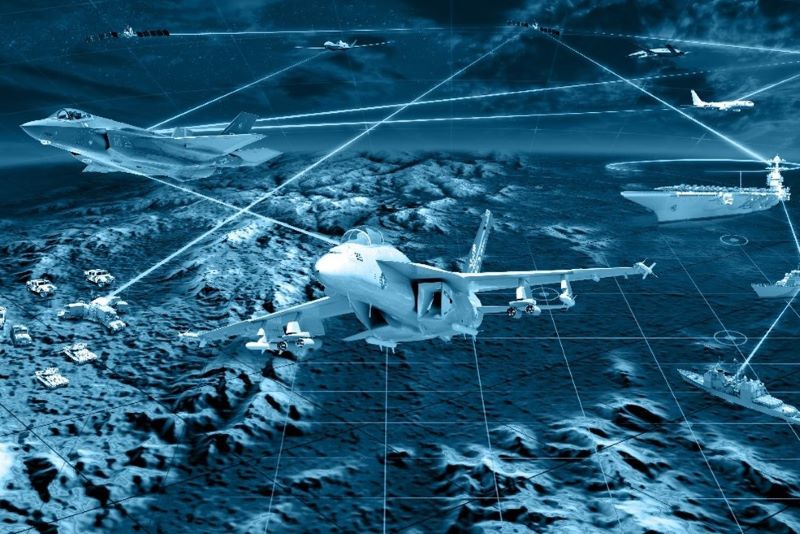Object custody: Meeting mission need with speed, confidence, and persistence

From IC Insider BAE Systems
Identification and continuous tracking of high-value objects drives interoperability to new heights
Government departments and agencies must become more interdependent to execute their missions in the modern battlespace. This interoperability is a top priority for finding and maintaining custody of high-value objects, such as ships and aircraft. This requires the Intelligence Community (IC) and Department of Defense (DOD) to work jointly to improve object identification confidence within mission timelines.
The DOD and IC need to develop strategies for improving mission execution across the long-range kill chain (LRKC). LRKC refers to the sequence of events and processes involved in detecting, identifying, tracking, targeting, and engaging adversarial targets from a distance. For the tactical warfighter community this is usually depicted as several steps, consisting of find, fix, track, target, engage, and assess. Intelligence operators may also refer to this as the generalized Observe, Orient, Decide, Act (OODA) set of activities. In both cases the mission is carried out by using a systems-of-systems enterprise made up of sensors, platforms, weapons, and communication networks. Closing a kill chain means the completion of a mission.

Object custody, or the ability to know where something of interest is at all times, plays a key role in this LRKC strategy. Object custody ensures that targets are accurately identified, tracked, and engaged over extended distances and durations. Performing this in mission timelines requires new approaches for integrating DOD and IC resources to fill the gaps of missing information.
Mission challenges
The variety of challenges associated with keeping track of high-value objects include automatic target recognition advancements, network availability and throughput, prioritization coordination, and more. At a high level, these can be categorized as challenges with enterprise interoperability between forces, aligning priorities across stakeholders, and human work capacity.
- Interoperability: In order for joint forces to execute missions successfully, timely coordination between departments and agencies is required. This pushes systems to integrate in a way not currently achieved.
- Prioritization: With multiple stakeholders requesting collection for their prioritized high-value objects, new solutions must be developed to assess these requests in vastly shorter timelines than the current systems.
- Human work capacity: Due to the increasing number of objects to maintain custody of as well as the growing number of data sources, analysts need solutions to make sense of data faster. This will reduce cognitive workload and enables analysts to focus on the right information at the right time.
Several efforts are underway to provide solutions to these high-level challenges and the difficult technical problems that underpin them.
Technology challenges
The need to modernize current tactics, techniques, and procedures stems from expanding demands. This includes the growth in information sources as well as increasing operational speed. A shared understanding of what the technical issues are among government stakeholders and industry is needed to build the right solutions.
- Workflow modernization: Across the IC and DOD communities, analysts are working with design and development teams to re-examine workflows with the goal of significantly reducing the time it takes to identify, request collection, process, and fuse information to maintain object custody. Trusted automation can triage the data to not miss critical indicators.
- Automatic object recognition: Techniques for the automatic recognition of objects provide the ability to comb through increasing amounts of information. Although machine learning and artificial intelligence approaches have advanced, there are still many challenges associated with the wide number of objects of interest where object custody is important.
- Fusion/data ontologies: The demand to resolve data from multiple information sources to a single entity with high confidence and accuracy drives the requirement for new data fusion techniques. The combination of automated recognition and fusion highlight the need to make object definitions understood by all users. For instance, each service and agency may currently use different standards which impacts how systems communicate with each other. If one department calls an object a “car” and another calls it an “automobile” this can ultimately affect speed and relevance of information. This reduces the confidence of an object’s identification.
- Data transport: Moving vast amounts of data across networks is difficult, yet essential for maintaining object custody. Careful consideration must be given to network designs, data management locations, migration decisions, and approaches that compute the value of information. This can be used to determine the most important data to move within available bandwidth.
Research organizations and program modernization efforts are moving to examine approaches that show promise across this landscape of challenges. Test, evaluation, and fielding timelines drive these initiatives to maintain a strong focus on technology insertion, community adoption, and use of new tools.
Methods to implement object custody today
Object custody is a multipronged approach that involves investing in a range of topics across all agencies. BAE Systems is working on these key elements today.
- Machine learning and artificial intelligence: Leveraging machine learning and autonomy-based solutions can help automate significant portions of object custody reporting workflows, provide rapid data exploitation, and anticipate activity through predictive analytics. These algorithms can sort through the increasing volume of information to find objects of interest for intelligence analysts and warfighters.
- Open system architecture: Adherence to open standards-based architectures remains fundamental for the rapid deployment of new solutions to operational environments. Applying leading-edge research in an open architecture allows for the selection and adaption of algorithms from across the object custody user community.
- Integrated data approach: Object custody increases the need for multi-stakeholder collaboration in how data is handled. With this comes increased focus on data standards, alignment of data object definitions, and solutions that can more readily bridge between these.
- Modeling and demonstrations: Modeling and simulation in operationally realistic environments has come to the forefront to help accelerate the fielding of new technologies. Testing in hardware-in-the-loop and software-in-the-loop environments allows for immediate feedback to development teams, leaving fewer challenges to be discovered in field testing.
BAE Systems is producing automated solutions by bringing in a wide range of data sources to achieve highly accurate object custody. These technologies are accelerating the development and fielding of new capabilities. The company is already creating next-generation intelligence, surveillance, and reconnaissance exploitation and resource management systems which use multiple source intelligence signal processing, all-domain analysis and data fusion, predictive analytics, machine learning, and automation to fill gaps in today’s military intelligence analysis capability.
Maintaining custody of high-value objects to a high-degree of probability is achievable with community collaboration on object custody solutions.
About BAE Systems, Inc.
BAE Systems, Inc. and its nearly 41,000 people are part of a global defense, aerospace, and security company with approximately 100,000 employees worldwide. We deliver products and services for air, land, sea and space, as well as advanced electronics, intelligence, security, and IT solutions and support services. Our dedication shows in everything we design, produce and deliver— to protect those who protect us in a high-performance, innovative culture. We push the limits of possibility to provide a critical advantage to our customers where it counts.
About IC Insiders
IC Insiders is a special sponsored feature that provides deep-dive analysis, interviews with IC leaders, perspective from industry experts, and more. Learn how your company can become an IC Insider.







